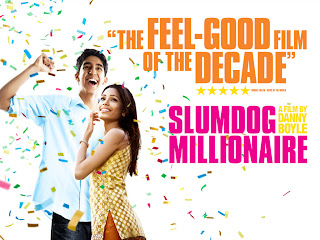Production:
- Directed by James Cameron, known for phenomenon Titanic and for creating film masterpieces.
- The films budget was $237 million, yet it took over $2.6 billion in the worldwide box office and won many oscars and golden globes.
- It is filmed in 3D, however Cameron worked with cinematographer Vince Pace to pioneer and patent a 'fusion digital 3D camera system'
- Cameron had the concept for this film twenty years ago, but he had to wait for the technology to catch up with him.With filming starting in 2003, a 'virtual camera' was used. This is a hand-held monitor which allowed him to move through a 3D terrain.
- 70% of the film is CGI, including the female lead. The cast wore motion-capture suits which are basically leotards with sensors on. They acted out their scenes on a 'performance capture' stage, six times bigger than anything used in Hollywood before.
- A 'skull cap' was used to capture the actor's facial expressions with close camera enhancement.
- Motion Capture- Makes 3D easier, allowing special effects and it also lets them position the camera to make it look like a computer game (it is actually a viewpoint from inside the virtual world).
- The virtual monitor was a big advance in technology, and it allowed Cameron to capture results in real time. Cameron developed new techniques for the live action parts and an innovative filming ring. This meant each lens could mimic a human eye. It captured the two images needed for 3D simultaneously, aligning with the illusion of depth.
- The Distribution Company was 20th Century Fox
- Because of the huge budget, the marketing for Avatar was a global campaign.
- Friday the 21st August was named 'Avatar day' with 15 minutes of teaser trailer footage released worldwide online at the same time.
- For the DVD release, an interactive trailer was released to convince audiences that the experience would be just as good away from the cinema and 3D screens. It allows viewers to zoom in, pause, look at hot spots and showed extended clips from the film as well as in depth information about the world of Pandora.
- 20th Century Fox enlisted the help of international creative marketing agency, Thinkjam. They made it possible for the interactive adverts to be shown simultaneously across the world, and created to technology for the internet to cope with this.
- If you were to give the full 'Avatar' experience in your cinema, then you would need digitally equipped screens. As well as this, each person in the audience needs a pair of 3D glasses to watch the film, which is an additional cost to the cinema, meaning the price of tickets is increased, so the film has to be worth the extra costs.
- So for both distributors and cinemas, 3D costs more, and with the equipment required so expensive, small independent cinemas have little chance competing. Only around 320 of the 3,600 cinemas in the UK are fully digitally equipped for 3D.

































